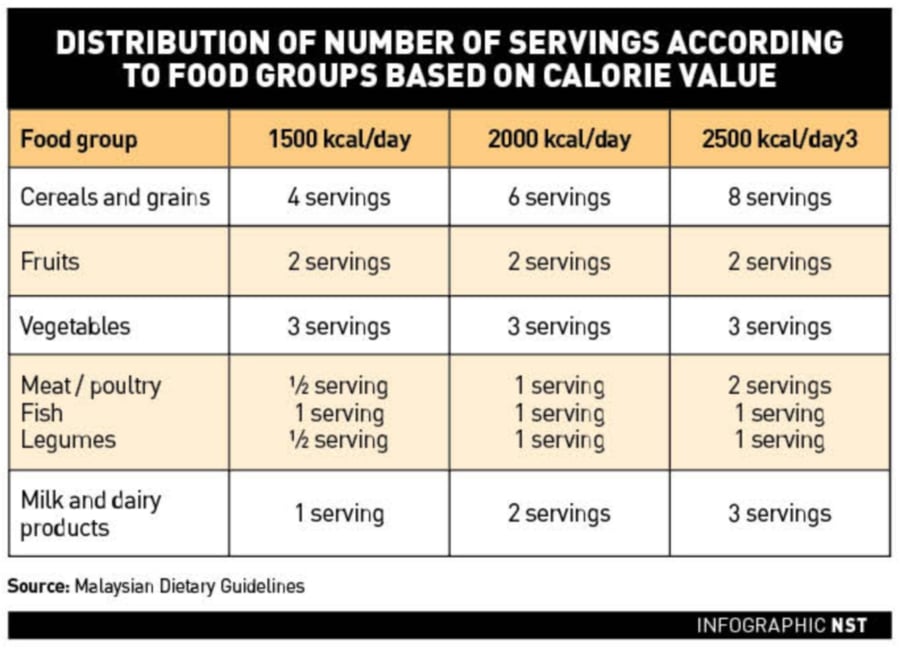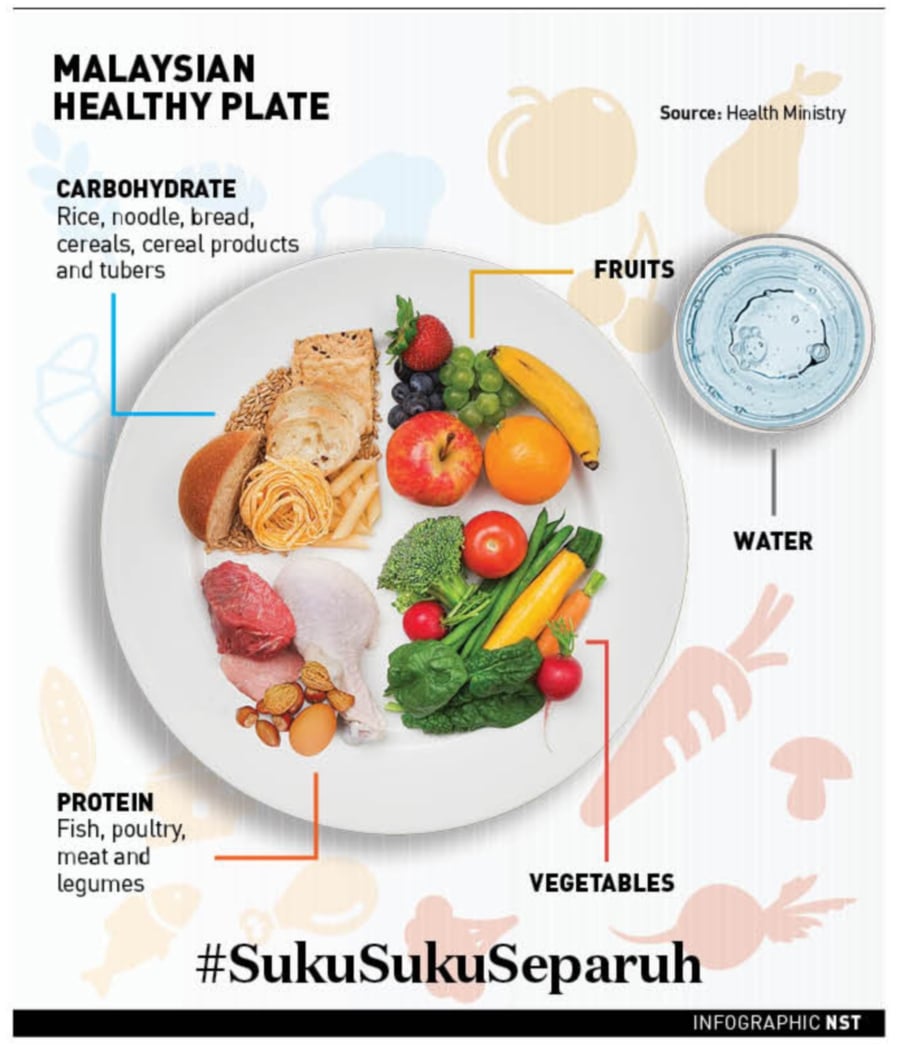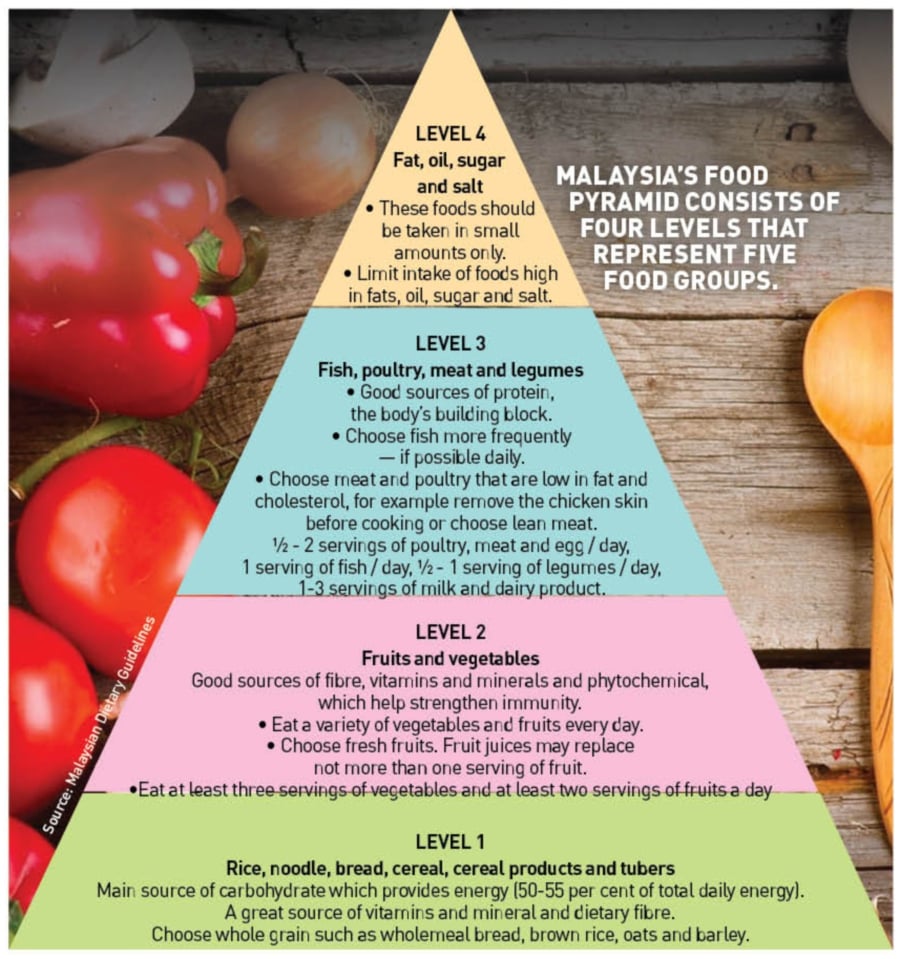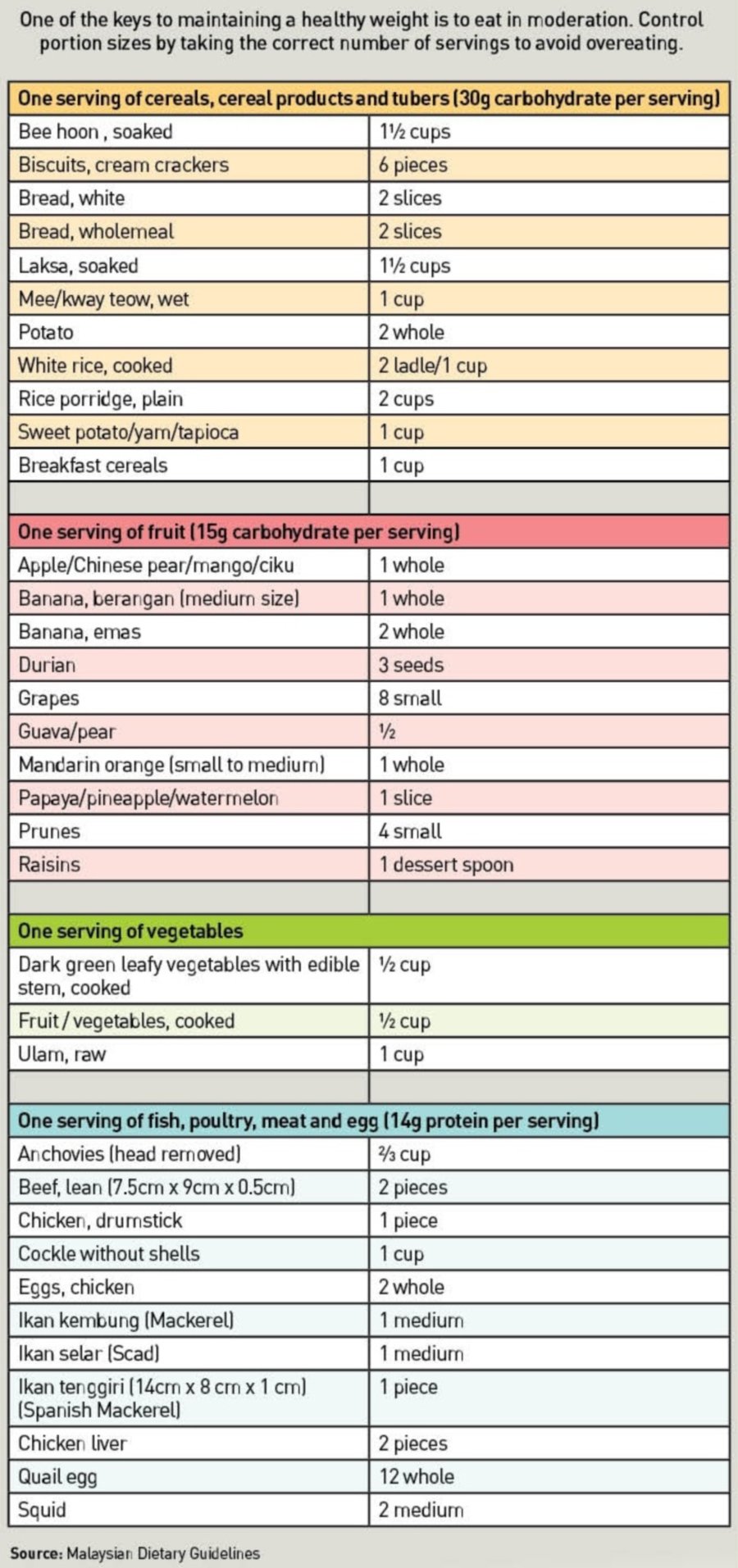A healthy, balanced diet requires various food choices from each of the food groups, writes Kasmiah Mustapha
THE main reason fad diets are deemed unhealthy is because they usually eliminate a whole food group or choose only one type of food, believing that focusing on, or eliminating a food group can create sustainable weight loss and prevent diseases.
The grapefruit diet, for instance, emphasises on consumption of grapefruit juice or grapefruit at every meal together with either meat, eggs or one type of vegetable. Grapefruit contains fat-busting enzymes that is claimed to help dieters lose more than 5kg in 12 days.
The Dukan diet focuses on eating a lot of lean meat, poultry, fish, shellfish, fat-free dairy, and eggs. The high-protein diet results in significant weight loss in a short time, due to the few carbohydrates allowed.
The American Dietetic Association defines fad diets as unreasonable or exaggerated beliefs that eating or not eating specific foods or combinations of certain foods offer quick weight loss and health benefits.
Health experts warn that excluding food groups from one’s diet can lead to serious health problems. According dieteticallyspeaking.com, since most fad diets only focus on one food group, they may lead to nutritional deficiencies.
For example, diets which only focus on fruit, vegetables, pulses and nuts will lead to greatly-reduced intake of iron, calcium, protein, healthy fats and whole grains which are great sources of fibre, slow release energy and B vitamins. This will cause health issues such as anaemia, osteoporosis and bowel problems.
Certain diets also cause nutritional excesses. Juice diets are very high in sugar but low in fibre, protein, iron and calcium. Similarly, low carbohydrate diets are often high in saturated fat as butter and red meat are unrestricted but fruit and grains are not allowed. High saturated fat intake can greatly increase cholesterol levels and the risk of heart disease.

FOOD CHOICES
A healthy, balanced diet requires various food choices from each of the food groups. Based on the Health Ministry’s food pyramid, there are five food groups that we need to include in our meals. These food groups contain foods that are similar in calories, carbohydrate, protein and fat content.
According to the Malaysian Dietary Guideline, a healthy diet provides the right combination of energy and nutrients. It emphasises on whole grains, a variety of fruits and vegetables, lean meats, poultry, fish, eggs, nuts and healthy fats — all of which come from the five food groups. A healthy diet’s characteristics are adequate, balanced, moderate and varied.
Pantai Hospital Kuala Lumpur senior dietitian Hin See Ling says health care professionals follow the food pyramid guideline as the illustration focuses on the concepts of variety, moderation and proportion.
It also includes a range of recommended serving size for each of the food group and visualisation of added fats and sugars throughout the five food groups.
She says people tend to follow fad diets because they misunderstand the concept of dieting. They believe that they should avoid or consume only a certain types of food for better and healthier outcome.
“It may result in some weight loss but they will suffer from lack of nutrients. A healthy diet does not eliminate specific food group. If they don’t want to eat rice, there are other sources of carbohydrate from the same food group such as wholemeal bread or whole grains.”
Hin says misconception about the so-called superfoods also lead to unhealthy dieting habits. People believe these foods to have more nutrients that can help with weight loss and preventing diseases.
“Eating these so-called superfoods does not mean it is a healthy balanced meal because there is no single food that is better than the other. All the foods have different vitamins, minerals and micronutrients that our body needs.
“We can’t say there are only two or three best foods in the group. For example, broccoli is listed as a superfood as it contains phytochemicals but other vegetables also have it, but in a different form and colour. We cannot rely only on certain types of food and call it a healthy diet.
She says healthy eating is based on the Health Ministry’s recommendation of between 1,500 and 2,500 calories per day. This is based on the person’s physical activity, physical condition and other factors.

VARIETY IS THE WAY
Hin says the right amount of nutrients needed to maintain health can be achieved by consuming various types of foods from all food groups in a right quantity as recommended.
“We should not consume only one food group as our body will not able to get the benefits of all nutrients needed. Similarly, we should not choose only one type of food from each food group.
“This is because no single food can provide all the nutrients that the body needs. And within the same group, there is no single food that is more healthy than others.”
She says although some fruits contain carbohydrate, it does not mean you can replace it with the food from the carbohydrate food group.
“We should not leave a food group and replace it with others, even if they have similar nutrients. We cannot substitute one banana with one cup of rice. It is a different type of carbohydrate and they don’t have similar nutrients.
“But you can choose to eat whole grains which have more fibre, vitamins and minerals. The food in this group has a similar amount of carbohydrate in one serving. For example half a cup of brown rice and half cup of white rice have the same amount of carbohydrate. But brown rice has more fibre, vitamins, minerals and micronutrients which are better than white rice.”
Hin says carbohydrate is an essential macronutrient which provides energy to the body. Therefore, it is important to include good sources of carbohydrate such as wholegrains, starchy vegetables, legumes and fruit in our diet.
As for protein, it is better to eat lean meat, poultry without skin and legumes, which are high in protein and low in saturated fat. To get the best nutrients, eat a variety of colours as they indicate different vitamins, minerals and phytochemicals.
She says because of the different nutrients, no one fruit or vegetable is better. For example banana has high potassium, while guava is high in vitamin C and fibre. It is best to eat a variety of fruits and vegetables.
“The principle of healthy eating is balanced, moderation and variety. You should emphasise on variety, which means eat various food from all food groups. The result is healthy weight management as your body gets all the nutrients to function properly and reduce risk of diseases.”

What a healthy meal looks like
THE Malaysian Healthy Plate, translates the recommendations from the food pyramid and Malaysian Dietary Guidelines. It provides a visual representation of what a healthy meal should look like. Preparing a balanced meal based on the Malaysian Healthy Plate model follows these five steps:
* Step 1: Using a 10 inch (25cm) plate, imagine there is a line that goes through the middle, dividing the serving space in half, and one half is divided in two. Now, there are three sections on a plate — two quarters and one half.
* Step 2: Fill the first quarter with carbohydrates, which are a major energy source. Rice is the staple food for most Malaysians, but other foods in this category include noodles, bread, cereals and wholegrain products.
* Step 3: Fill the second quarter with a protein source such as meat, fish, beans, eggs, nuts, legumes and tofu.
* Step 4: Fill the other half of the plate with vegetables and add one serving of fruit. This ensures a diet rich in fibre and all the essential vitamins and minerals. This largest portion of the plate can be filled with leafy greens and fibre-filled fruits such as apples, oranges, bananas and papaya.
* Step 5: Finally, complete the meal by drinking a glass of water. Staying hydrated is just as important as eating a balanced diet. Although plain water is preferable, you can opt for unsweetened beverages or milk and milk products to accompany a meal.
Source: Healthtoday.net








